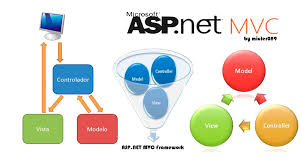In this article, I am going to discuss Model Binding in ASP.NET MVC Application with Examples. Please read our previous article before proceeding to this article where we discussed how to bind Model Data using FormCollection Class in ASP.NET MVC Application. We are also going to work with the same example that we worked on in our previous article.

Here in this Video, we will discuss how to map ASP.NET MVC posted form data to controller action method using simple parameter types as well as using complex parameters using Model Binding.

Let us first recap of what we did in our previous Video.
In our previous Video, in order to save the form data to a database table, we use FormCollection class as shown in the below code. The FormCollection class will automatically receive the posted form values in the controller action method.
The above “Create†HttpPost action method can be re-written using simple types as shown below. Notice that, here the create action method has got parameter names that match with the names of the form controls. The model binder in ASP.NET MVC maps the values of these controls to the respective parameters.
Run the application. Create one employee and see everything is working as expected.
Note: The order of the parameters does not matter. What matters is the name of the parameter. If the parameter name is different from the form control name then the form data will not be mapped as expected.
Do we really have to do these mappings manually?
The answer is no. Instead of creating simple parameters we can create one parameter of Employee type which will automatically hold the posted form values. Lets modify the create HttpPost method to accept a complex parameter of Employee Type as shown below.
Points to Note:
- The model state is being checked using the IsValid boolean property of the ModelState object. We will discuss ModelState in a later Video.
- Instead of passing the individual properties of the “Employee†object as parameters to the “Create†action method, we are now passing the “Employee†object itself.
- The “Employee†object is then handed over to the AddEmployee() method of the “EmployeeBusinessLayer†class, which takes the responsibility of saving the “Employee†object to the database table.
- Upon saving the employee the user is then redirected to the “Index†action method.
- If there are any “Model†validation errors ModelState IsValid returns false. In this case, we stay on the same create view which gives the opportunity to correct the errors and resubmit the page.
What is Model Binding in ASP.NET MVC?
The ASP.NET MVC Model Binding is a mechanism that maps the HTTP request data with a model. It is the process of creating .NET objects using the data sent by the browser in an HTTP request. The ASP.NET Web Forms developers who are new to ASP.NET MVC are mostly confused about how the values from View get converted to the Model class when it reaches the Action method of the Controller class, so this conversion is done by the Model Binder.
Model binding is a well-designed bridge between the HTTP request and the C# action methods. It makes it easy for developers to work with data on forms (views) because POST and GET are automatically transferred into a data model we specify. ASP.NET MVC uses default binders to complete this behind the scene.
 Best resource for Online free Education
Best resource for Online free Education